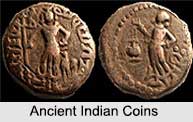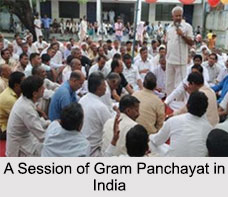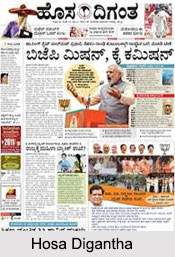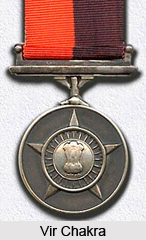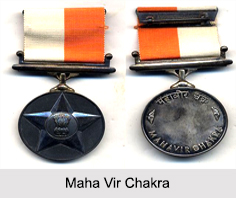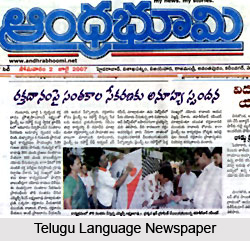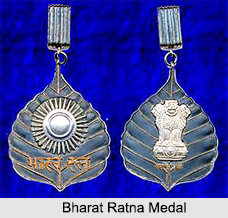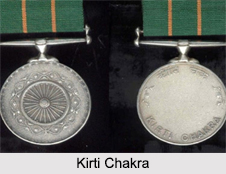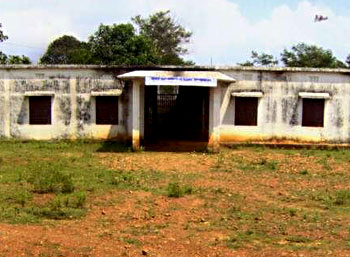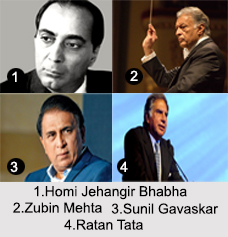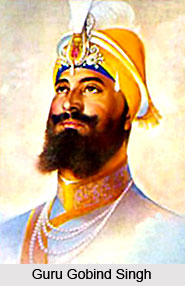 Role of Khalsa in the Indian Army was significant. After the death of Guru Gobind Singh, Khalsa or the entire community became the guru. Shortly before his death Gobind Singh had chosen Banda, a bairagi as his chief disciple. All the Sikhs in the country-side flocked to his banner. With his limited resources and small armies he soon brought the whole of Punjab south-east of Lahore under the Sikh banner and laid the foundation of the first political empire of the Sikhs. Coins were struck in the name of the guru. He appointed governors at the places captured by him and also levied taxes.
Role of Khalsa in the Indian Army was significant. After the death of Guru Gobind Singh, Khalsa or the entire community became the guru. Shortly before his death Gobind Singh had chosen Banda, a bairagi as his chief disciple. All the Sikhs in the country-side flocked to his banner. With his limited resources and small armies he soon brought the whole of Punjab south-east of Lahore under the Sikh banner and laid the foundation of the first political empire of the Sikhs. Coins were struck in the name of the guru. He appointed governors at the places captured by him and also levied taxes.
Guru Gobind Singh introduced the institution of the pahul for the Khalsa which was meant to initiate the followers. Baptism by the sword has a great significance for all fighting men. This process did change the meek and unassuming followers into singhs or lions. Henceforth all Sikhs were known as singhs and Gobind Singh himself gave the lead by being initiated by his five followers. All those who accepted his baptism were called the Khalsa. Khalis in Arabic means `pure`. So far the Sikhs had no distinguishing marks and in times of severe trial some of the followers would escape persecution and torture by denying the fact of their religion. The arms that they carried could be easily thrown away to avoid detection. So, as a step to further unify the followers, he enjoined on all those who accepted the pahul to wear the five Ks: kesh or hair; kangha or comb; kirpan or dagger; kacha or underwear and kara or bangle. The Sikhs were also required to abjure wine and tobacco.
Another step based on the Sikhs` deep reverence and devotion to their guru went very far in making their religion into a strong political unit. The guru became the Khalsa and the Khalsa the guru. All guidance was to come from the Holy Book and there was to be no difference between the disciple and the guru. They were all to be members of one family, a vast brotherhood. It is a historical fact that the first five converts under the new system and known as the panch pyare - the beloved five, were all men from different castes and did earn many a victory and fame in the battle-field, thus proving Gobind Singh`s injunction that on imitation even jackals become lions.
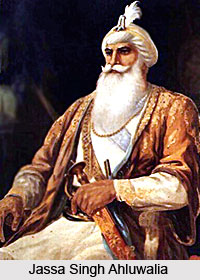 The Mughals again attacked the Sikhs. Hurried defences were put up and Banda had to fight at a great disadvantage as the siege was daily tightened and provisions soon ran short. This campaign ended up as a long drawn out siege. Disagreements in the Sikh camp made matters still worse. Banda and his small band of followers were starved out and further resistance was found to be impossible. Thus, after this incident, the Sikhs virtually disappeared from the scene as a political force for some time now. But, eventually Banda had started a new tradition in resisting tyranny and he awakened a national consciousness that `not to die so easily now`.
The Mughals again attacked the Sikhs. Hurried defences were put up and Banda had to fight at a great disadvantage as the siege was daily tightened and provisions soon ran short. This campaign ended up as a long drawn out siege. Disagreements in the Sikh camp made matters still worse. Banda and his small band of followers were starved out and further resistance was found to be impossible. Thus, after this incident, the Sikhs virtually disappeared from the scene as a political force for some time now. But, eventually Banda had started a new tradition in resisting tyranny and he awakened a national consciousness that `not to die so easily now`.
The idea of a national state which had received an impetus at his hands gradually became a living symbol and continued to inspire the Sikhs all through the next generations. They formed themselves into small states and their leaders started new dynasties and kingdoms. During this period reorganisation was started in the lower ranks and after some time the institution of the Khalsa and the panth assumed their rightful place in society. The sanctity of the panth which it enjoyed earlier is still given to it, although with the changed conditions it is merely a figure-head. As defence slowed up with the passage of time, the Sikhs would meet regularly twice each year on the occasion of Diwali and Baisakhi at Amritsar, secretly or openly as circumstances would permit and discuss matters both secular and temporal. These annual meetings assumed more and more importance and the higher councils were known as the Guru Panth. Thus, the Guru Granth Sahib and the Guru Panth went hand in hand at all these councils and the decisions arrived at the meetings came to be known as `gurmatta` or decisions of the guru. The evolution of this theocratic confederation is considered to be another important level in Sikh military history. Nothing like that had existed before. It must, however, be noted that there was no proper planning for this and the evolution came as a matter of circumstances directed.
New leaders came to the fore-front among whom Kapur Singh had great influence. Under his guidance the army was divided into two groups - the elder set and the younger set. Leaders of these divisions were all capable men. Each one had his own followers. Being tired of the constant campaigning and the unbending character of the Sikhs the Muslims started placating them. At the annual meeting of the Panth in 1748 the Khalsa was declared a state and Jassa Singh Ahluwalia elected as Supreme Commander of the Khalsa army. Building of forts was encouraged and the activities of the Sikhs continued to increase in the Punjab with no central or provincial authority interfering with them. Now they also played their part in the internal dissensions of the Muslim hierarchy. Gradually, the Sikhs became supreme in the area south and east of Lahore.







